Vegetables
Creamy Polenta with Fresh Oregano and Feta Cheese, Vegetables and Side Dishes
About 75% of Americans want healthy side dishes for their meals. Creamy polenta with fresh oregano and feta cheese is a great choice. It’s soft, flavorful, and perfect for big groups or meal prep. It’s a tasty way to add variety to your dishes.
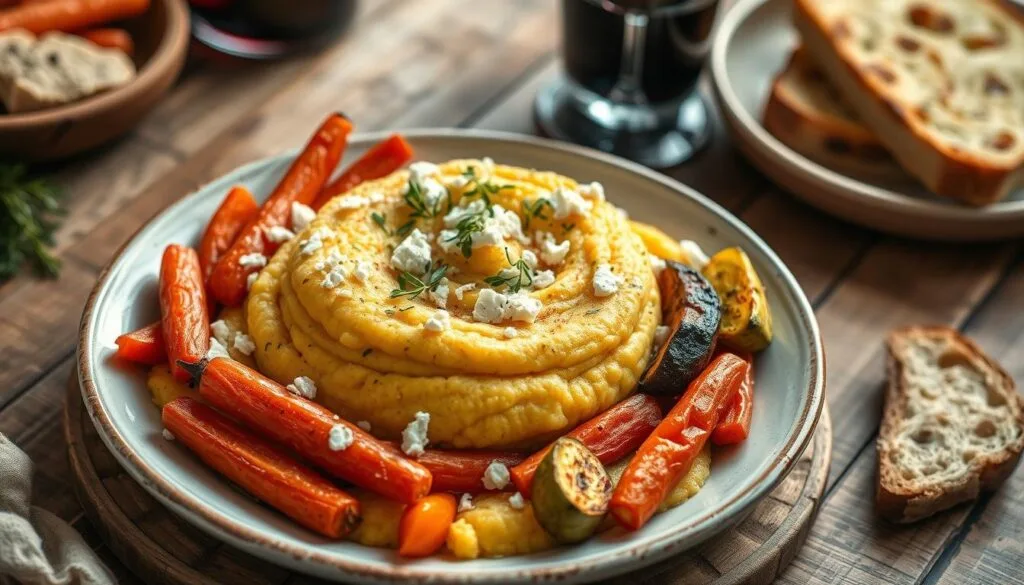
Introduction to Creamy Polenta
Creamy polenta with fresh oregano and feta cheese is a tasty dish. It’s great with many vegetables and side dishes. It’s perfect for any meal, whether it’s a weeknight dinner or a big gathering.
Key Takeaways
- Creamy polenta with fresh oregano and feta cheese is a healthy side dish recipe option
- This dish is a perfect addition to vegetables and side dishes
- The recipe yields 8 servings, making it ideal for large gatherings or meal prep
- Creamy polenta can be paired with a variety of vegetables and side dishes
- Fresh oregano and feta cheese add flavor and texture to the dish
- This dish is suitable for special occasions or weeknight dinners
Introduction to Traditional Italian Polenta
Polenta is a key dish in Italian cooking, with a long history. It’s made from cornmeal and has changed over the years. Now, it’s loved for its simplicity and how well it goes with vegetables.

Polenta is great because it can be paired with many foods. This makes it a hit with chefs and home cooks. They see it as a blank canvas for creative dishes.
History of Polenta in Mediterranean Cuisine
Polenta has been around for ages, enjoyed by both peasants and nobles. It traveled across the Mediterranean, with each culture adding their own twist.
Cultural Significance of Polenta Dishes
In Italy, polenta is a big deal, especially at family events. But it’s not just in Italy; it’s a beloved dish in many Mediterranean countries.
Modern Adaptations of Classic Polenta
Today, polenta is in many new forms, like creamy sides with veggies or crispy fries. These new dishes show how versatile polenta can be. It’s a great ingredient for creative, easy vegetable dishes.
Essential Ingredients for Perfect Polenta
Yield: Makes 8 (about ½-cup) servings
- 1 cup (140 g) dry polenta meal (not corn meal)
- 1 cup (235 ml) nonfat milk
- 2½ cups (570 ml) water
- 1/8 teaspoon salt
- 2 tablespoons (8 g) chopped fresh oregano leaves
- 1/3 cup (50 g) feta cheese crumbles
Spray an 8- or 9-inch (20- or 22.5-cm) pie pan, a 7- x 7-inch (17.5- x 17.5-cm) baking dish, or sheet pan with cooking spray.
In a small bowl, place the polenta and pour the milk over the top. Stir the mixture to expose all the polenta to the liquid. (This process will eliminate lumps in the finished product.)
In a 1½-quart (1.5-L) saucepan, bring the water and salt to a soft boil and slowly add the soaked polenta, stirring constantly. Continue cooking, stirring, until the polenta begins to pull away from the sides of the pan. Remove the pan from the heat and stir in the oregano and cheese.
Immediately pour the polenta into the prepared pie pan or baking dish or spoon it free-form into a mound in the center of the sheet pan. Allow the polenta to cool until it sets enough to cut into squares or wedges (if serving from the free-form) and lifts away from the pan in one piece.
NUTRITIONAL ANALYSIS
EACH WITH: Calories: 125.51, Protein: 4.42 g, Carbs: 23.82 g, Total Fat: 1.46 g, Sat Fat: 0.99 g, Cholesterol: 6.18 mg, Sodium: 104.50 mg, Sugars: 1.77 g, Fiber: 1.12 g
VARIATIONS
In place of water, use low-sodium chicken broth. In place of oregano and feta cheese, use ¼ cup (25 g) chopped green onion and 1/3 cup (40 g)reduced-fat, shredded Cheddar cheese, or ¼ cup (4 g) chopped fresh cilantro and 2 tablespoons (28 ml) lime juice, or 2 tablespoons (12 g) chopped green chilies and 1/3 cup (40 g) reduced-fat shredded Cheddar cheese. Or add 1 tablespoon (5 g) shredded Parmesan cheese.
To make the perfect polenta, you need top-notch ingredients. Fresh, healthy items like veggies and herbs are key. They add taste, texture, and nutrients to your polenta, making it a complete meal.
When making polenta, use coarse or fine grain polenta meal, water or broth, and a bit of salt. Adding delicious veggie sides like roasted veggies, sautéed spinach, or grilled mushrooms boosts flavor and nutrition.
Here are some tips for picking the best ingredients for your polenta:
- Choose fresh, high-quality veggies for your nutritious vegetable sides
- Pick a good polenta meal that fits your recipe
- Use herbs and spices to flavor your polenta and delicious veggie sides
With the right ingredients and a few simple tips, you can make a tasty, healthy polenta dish. It’s great as a main course or side, offering versatility and flavor for any event.
Understanding Different Types of Polenta Meal
Polenta comes in many types, each with its own special qualities. It’s perfect for quick side dishes or hearty dinners. Knowing the different types helps you pick the best one for your meal.
Polenta meals fall into two main categories: coarse and fine grain. Coarse grain polenta is loved for its texture and taste. Fine grain polenta is better for creamy dishes. Plus, you can choose between instant and traditional polenta, each with its own benefits and downsides.
Coarse vs Fine Grain Polenta
- Coarse grain polenta is great for its texture and flavor, making it perfect for quick side dish recipes.
- Fine grain polenta is better for creamy dishes, like polenta with fresh veggies or cheese.
Instant vs Traditional Polenta
- Instant polenta is ideal for a quick side dish recipe, ready in just minutes.
- Traditional polenta takes more time but offers a richer flavor and texture.
In conclusion, knowing the different polenta meals can make your vegetable side dish for dinner delicious and satisfying. By picking the right polenta, your dish will be just right.
Step-by-Step Cooking Instructions
To make a tasty and creamy polenta, start by getting your ingredients ready. You’ll need fresh vegetables and side dishes to go with it. Pick flavorful side dish options like roasted veggies or a simple green salad.
Then, cook the polenta as the package says. This usually means boiling water, then slowly adding the polenta while whisking. Lower the heat and keep stirring until it thickens and gets creamy.
While the polenta cooks, prep your oregano and feta cheese. Chop the oregano and crumble the feta. Once the polenta is ready, mix in the oregano and feta. Add salt and pepper to taste.
Here are some tips for cooking polenta:
- Choose a good-quality polenta made from vegetables and side dishes like corn.
- Whisk constantly to avoid lumps.
- Don’t overcook it, or it will get too thick and sticky.
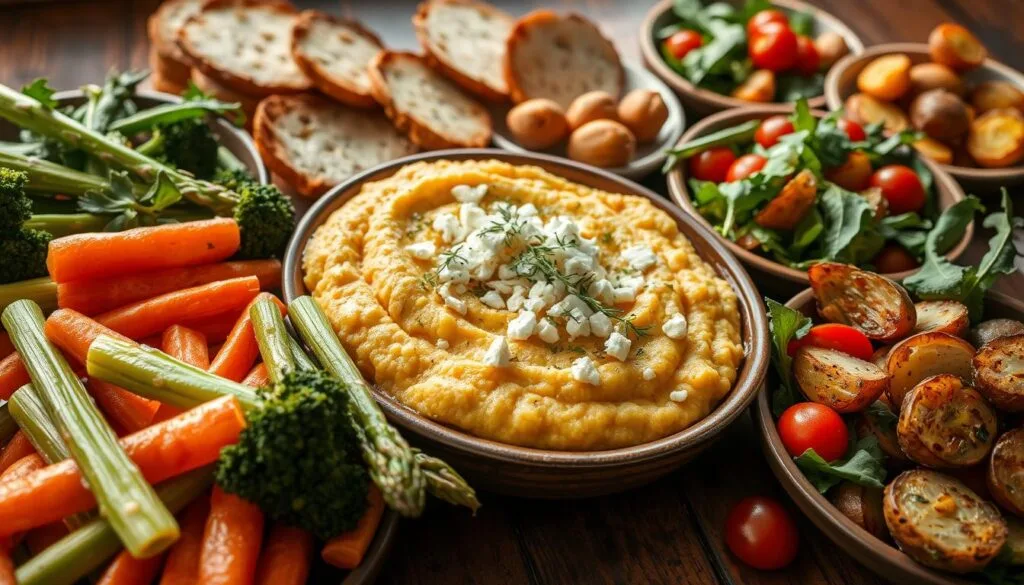
With these easy steps, you can make a delicious creamy polenta with fresh oregano and feta cheese. It’s great as a flavorful side dish option or a base for a hearty vegetables and side dishes meal. Try different ingredients and seasonings to find your favorite polenta recipe.
Mastering Vegetables and Side Dishes: Polenta Edition
To make a great meal with polenta, you need to get good at making healthy side dishes and easy vegetable dishes. This way, you can make your polenta dishes even better. Adding the right vegetables can make your meal tasty, textured, and full of nutrients.
When cooking veggies, stirring techniques are key to getting them just right. If you cook them too long or too short, they won’t taste good. Here are some tips to help you cook veggies perfectly with polenta:
- Choose the right type of vegetables: Pick veggies that go well with polenta, like roasted or sautéed ones.
- Don’t overcook: Cook veggies until they’re tender but still crisp. Overcooking makes them mushy.
- Season with herbs: Add fresh or dried herbs to your veggies to make them taste and smell better.
By using these tips and trying out different healthy side dishes and easy vegetable recipes, you can make a fantastic meal. Your polenta dishes will be the highlight of the meal. With a bit of practice, you’ll be a pro at cooking veggies and side dishes.
Fresh Oregano and Feta: The Perfect Flavor Combination
Fresh oregano and feta make a great team for tasty vegetable sides. They add a special touch to any dish. Together, they bring out the best in polenta, oregano, and feta, making your meal both delicious and healthy.
Fresh herbs like oregano bring a lot of flavor without extra calories. They’re also full of antioxidants and have anti-inflammatory properties. Adding high-quality feta cheese, which is rich in protein and calcium, makes the dish even better.
Here are some ways to use fresh oregano and feta in your vegetable sides:
- Adding fresh oregano leaves to your polenta for extra flavor
- Using feta cheese as a topping for your vegetable sides, such as roasted vegetables or grilled vegetables
- Creating a salad with mixed greens, cherry tomatoes, and crumbled feta, topped with a sprinkle of fresh oregano
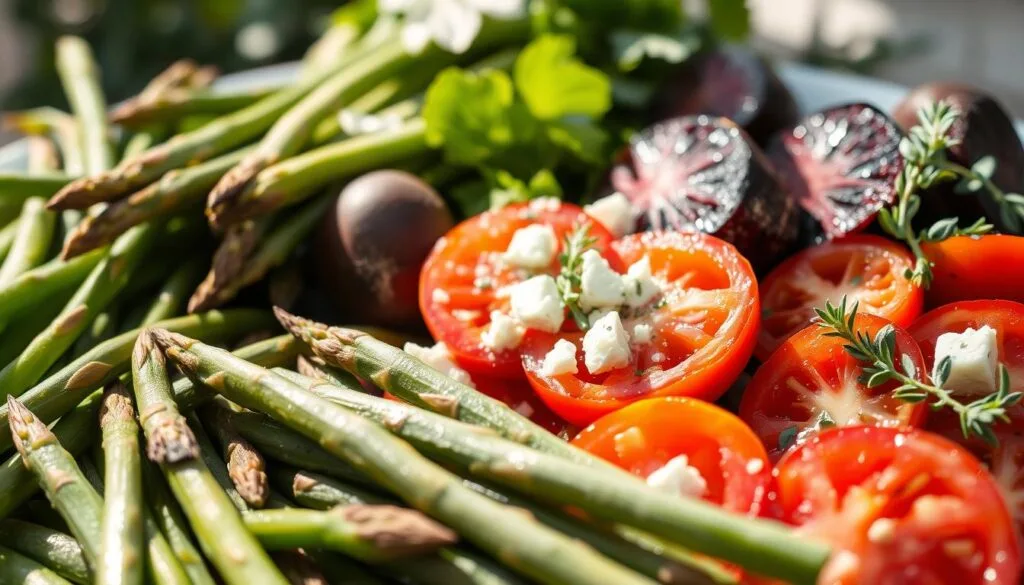
Combining fresh oregano and feta creates a flavor that’s both tasty and healthy. This mix will impress everyone at your table. It’s a great choice for adding something special to your meals.
Nutritional Benefits and Dietary Considerations
Polenta is a nutritious and versatile dish. It’s great for a healthy diet when paired with veggie sides. It’s also quick to make, making it perfect for busy days.
Polenta is packed with complex carbs, fiber, and minerals. This makes it a great choice for those with dietary restrictions. It’s especially good for vegetarians and vegans because it’s a good protein source.
It’s also gluten-free, which is great for people with gluten intolerance. This makes polenta a versatile option for many diets.
Protein and Mineral Content
Polenta is rich in protein and minerals like iron, magnesium, and phosphorus. It’s also low in calories, with about 150-200 calories per serving. This makes it perfect for weight management or low-calorie diets.
Gluten-Free Options
Polenta is a great gluten-free option. It pairs well with many veggie sides, like roasted veggies or sautéed spinach. This creates a nutritious and balanced meal.
Caloric Information
The calories in polenta depend on serving size and ingredients. But, on average, it has about 150-200 calories per serving. This is great for those who want low-calorie, nutrient-rich side dishes.
In summary, polenta is a nutritious and versatile dish. It’s high in minerals, gluten-free, and low in calories. It’s an excellent choice for healthy side dishes, whether you’re in a hurry or looking for a nutritious meal addition.
Creative Serving Suggestions and Pairings
Polenta offers endless serving options. It’s great as a side dish or a main course. For a tasty side, pair it with roasted veggies like Brussels sprouts or broccoli. Add fresh herbs like parsley or basil for extra flavor.
Polenta is also perfect for a variety of vegetable dishes. Top it with sautéed spinach, mushrooms, or bell peppers for a quick meal. Grated cheese, such as parmesan or feta, adds a creamy, tangy taste. For a bigger meal, serve it with a hearty stew or braised meat like short ribs or lamb shanks.
- Pair it with flavorful side dish options like roasted sweet potatoes or green beans
- Use it as a base for a vegetarian or vegan main course with sautéed veggies and legumes
- Add it to a breakfast dish, like a breakfast bowl with scrambled eggs and sausage
These ideas will elevate your polenta dishes and impress everyone. Whether as a side or a main course, polenta is always a hit.
Storage Tips and Reheating Methods
Storing and reheating polenta right is key to keeping its taste and texture. For healthy side dish recipes, store cooked polenta in a sealed container in the fridge for up to three days. This stops bacteria from growing and keeps the polenta fresh.
To reheat polenta, use the microwave or stovetop. For the microwave, put it in a safe dish and heat for 30-45 seconds. Or, heat it in a saucepan with a bit of water over low heat, stirring often. This makes it easy to prepare and reheat.
Here are some more tips for storing and reheating polenta:
- Keep cooked polenta in a cool, dry spot to avoid moisture buildup.
- Reheat polenta with a bit of water or broth to avoid it getting too thick.
- Use leftover polenta for healthy side dish recipes like polenta cakes or fries.
By following these tips, you can enjoy polenta for days. It’s perfect for vegetables and side dishes and adds variety to your meals. Polenta is a great choice for healthy side dish recipes or just to mix things up.
Variations and Alternative Ingredients
Polenta is a versatile base for delicious and easy vegetable dishes. You can make different versions to suit various tastes and dietary needs. For example, herb substitutions can bring unique flavors, and cheese alternatives can add creaminess without dairy. These changes help create a wide range of vegetable side dishes, making polenta perfect for experimenting.
Exploring variations is key, especially when it comes to dairy-free options. You can swap traditional cheese for plant-based alternatives or use non-dairy milk in the polenta. These changes not only meet dietary restrictions but also introduce new flavors and textures. They’re great for making innovative easy vegetable dishes.
Exploring Alternative Ingredients
- Herb substitutions: Basil, rosemary, or thyme can add distinct flavors to polenta.
- Cheese alternatives: Nutritional yeast or soy cheese can mimic the cheesy flavor in dairy-free polenta.
- Non-dairy milks: Almond, soy, or coconut milk can be used to create a creamy polenta without dairy.
By trying out these variations and alternative ingredients, you can make a variety of easy vegetable dishes and side dishes. Whether you’re looking for dairy-free options or want to try different herbs, polenta is a rich canvas for creativity in the kitchen.
Conclusion
As we wrap up our look at creamy polenta, it’s obvious that it’s a treasure in Italian cooking. Its rich history and cultural importance make it a favorite in Mediterranean dishes. Plus, its modern uses have made it even more popular.
Polenta is great as a side dish or as part of a hearty veggie meal. Its ability to adapt to many recipes is truly impressive. This article has shown you how to make the most of polenta, from getting the right texture to adding tasty toppings.
Polenta is not just tasty; it’s also packed with protein and minerals. And, it’s gluten-free, making it a great choice for a healthy diet. We hope this guide has sparked your interest in polenta. Let it help you make your meals more vibrant and nutritious.


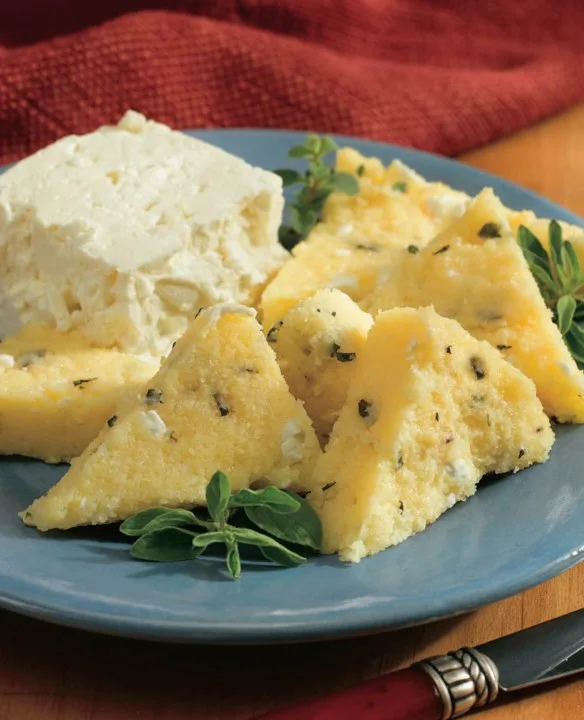

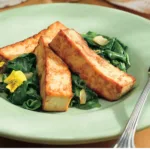
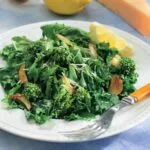
GIPHY App Key not set. Please check settings